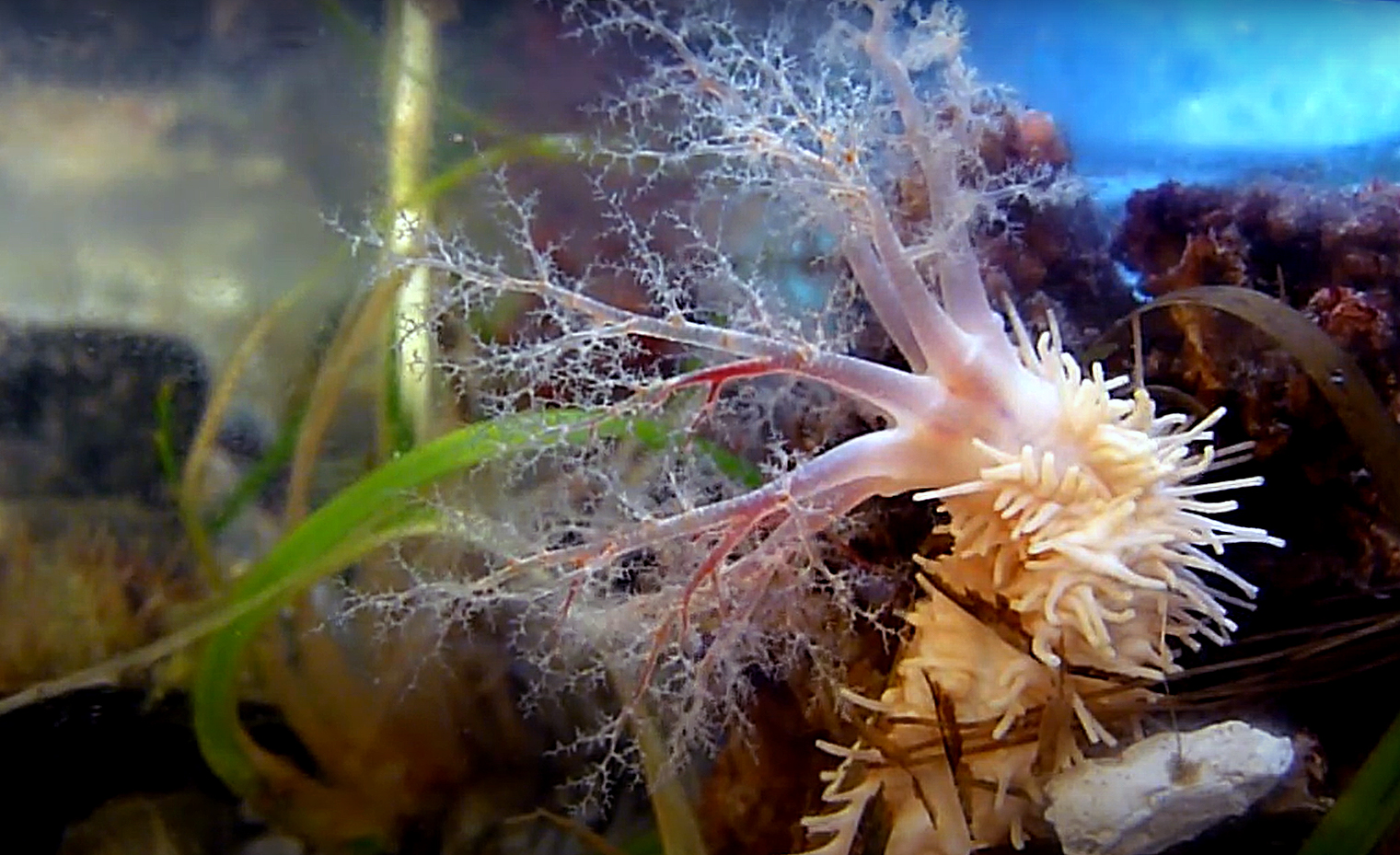Stiff-Footed Sea Cucumber
Author: Haley Singleton and Sekoya Wellings
Common Names: Stiff-footed sea cucumber, white sea cucumber
Scientific name: Eupentacta quinquesemita
Size range: Can grow up to 10 cm (4 inches) long
Identifying Features: The stiff-footed sea cucumber is white to cream coloured with eight large tentacles and two smaller ones that surround the mouth. The branching tentacles may be creamy white with yellow to pink at the base. These tentacles are used to catch food as well as for respiration. This sea cucumber has tube-like feet covering its whole body. The size of the cucumber can vary from 4 cm to 10 cm long and its body wall is poisonous to certain types of fish.
Habitat:
This creature can be found under and between rocks along the coasts from Alaska to California. They are often found living in shallow rocky areas and are also commonly found along the underside and edges of floating docks.
Food/Prey:
With its mucous covered tentacles, the stiff-footed sea cucumber is a filter feeder that collects small particles such as plankton and small decaying organic matter for food. It generally does this by holding its tentacles in the current and filtering out food items that stick to the “tree” of tentacles. It then takes each tentacle (which is a modified tube foot) places it into its mouth and takes the food off of it. It then withdraws the tentacle and places it back in the current.
Predators:
The main predator of these sea cucumbers is the sea star Solaster stimpsoni.
Life Cycle:
Sea cucumbers are either male or female and they reproduce by releasing sperm and greenish eggs into the ocean water in spring. The zygote developes into a ciliated larvae before metamorphosising through a number of planktonic stages before the juvenille settles on the ocean floor or other substrate.
References:
Hanby, B. (2005). Marine Life of the Pacific Northwest. Harbour Publishing
Kozloff, E. (1993). Seashore life of the Northern Pacific Coast: An illustrated guide to Northern California, Oregon, Washington, and British Columbia. Seattle, Washington: University of Washington press
Williams, Kelley (2002). http://www.wallawalla.edu/academics/ departments/biology/ Retrieved January 21st, 2013 from http://depts.washington.edu/fhl/200432/cattlepoint/432cat.html

